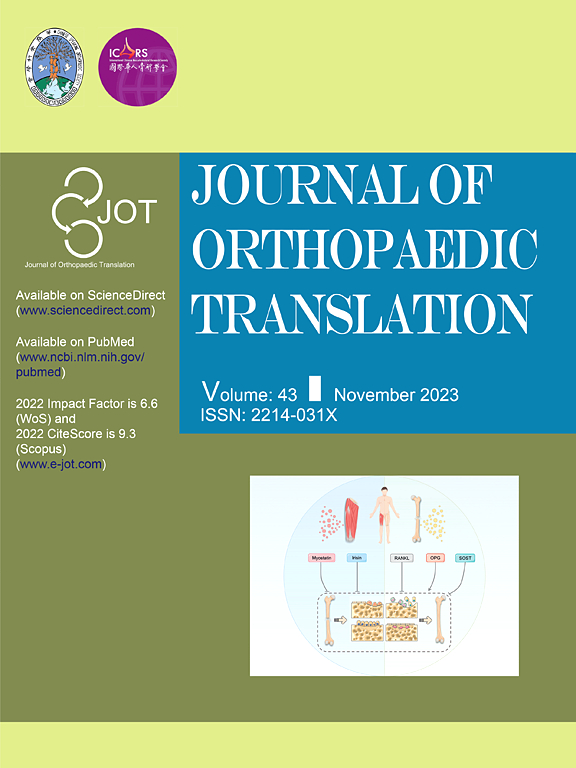Therapeutic potential of stem cell-derived exosomes for bone tissue regeneration around prostheses
IF 5.9
1区 医学
Q1 ORTHOPEDICS
引用次数: 0
Abstract
Artificial joint replacement is a widely recognized treatment for arthritis and other severe joint conditions. However, one of the primary causes of failure in joint replacements is the loosening of the prosthesis. After implantation, wear particles between the implant and the adjacent bone tissue are the principal contributors to this loosening. Recently, exosomes have garnered significant interest due to their low immunogenicity and effective membrane binding. They have shown potential in promoting bone regeneration via the paracrine pathway. This review examines the role and mechanisms of exosomes derived from mesenchymal stem cells (MSCs) in bone regeneration, their impact on the integration of various implants into surrounding bone tissue and current challenges and future directions for the clinical application of exosomes.
The Translational Potential of this Article: Emerging evidence suggests that mesenchymal stem cell-derived exosomes may offer a promising therapeutic strategy for aseptic prosthesis loosening, potentially mediated through mechanisms such as modulation of inflammatory responses, suppression of osteoclastogenesis, enhancement of osteogenic differentiation and facilitation of bone regeneration. Preclinical studies further indicate that the therapeutic potential of these extracellular vesicles could be optimized through bioengineering strategies, including surface modification and cargo-loading techniques, warranting further investigation to advance their clinical translation.

干细胞来源外泌体在修复体周围骨组织再生中的治疗潜力
人工关节置换术是一种广泛认可的治疗关节炎和其他严重关节疾病的方法。然而,关节置换术失败的主要原因之一是假体松动。植入后,植入物与相邻骨组织之间的磨损颗粒是导致这种松动的主要原因。最近,外泌体由于其低免疫原性和有效的膜结合而引起了人们的极大兴趣。它们已显示出通过旁分泌途径促进骨再生的潜力。本文综述了来自间充质干细胞(MSCs)的外泌体在骨再生中的作用和机制,它们对各种植入物与周围骨组织整合的影响,以及外泌体临床应用的当前挑战和未来方向。本文的翻译潜力:新出现的证据表明,间充质干细胞衍生的外泌体可能为无菌假体松动提供了一种有前景的治疗策略,可能通过调节炎症反应、抑制破骨细胞生成、增强成骨分化和促进骨再生等机制介导。临床前研究进一步表明,这些细胞外囊泡的治疗潜力可以通过生物工程策略进行优化,包括表面修饰和装载技术,需要进一步研究以促进其临床转化。
本文章由计算机程序翻译,如有差异,请以英文原文为准。
求助全文
约1分钟内获得全文
求助全文
来源期刊

Journal of Orthopaedic Translation
Medicine-Orthopedics and Sports Medicine
CiteScore
11.80
自引率
13.60%
发文量
91
审稿时长
29 days
期刊介绍:
The Journal of Orthopaedic Translation (JOT) is the official peer-reviewed, open access journal of the Chinese Speaking Orthopaedic Society (CSOS) and the International Chinese Musculoskeletal Research Society (ICMRS). It is published quarterly, in January, April, July and October, by Elsevier.
 求助内容:
求助内容: 应助结果提醒方式:
应助结果提醒方式:


